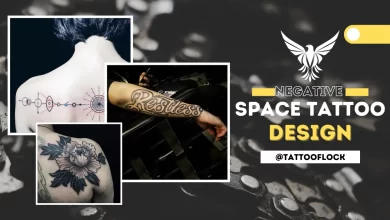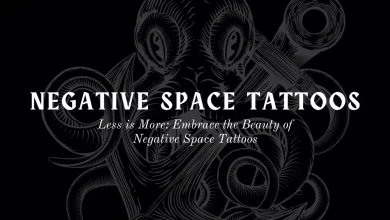Discovering the Hidden Beauty: A History of Negative Space Tattoos and Their Evolution
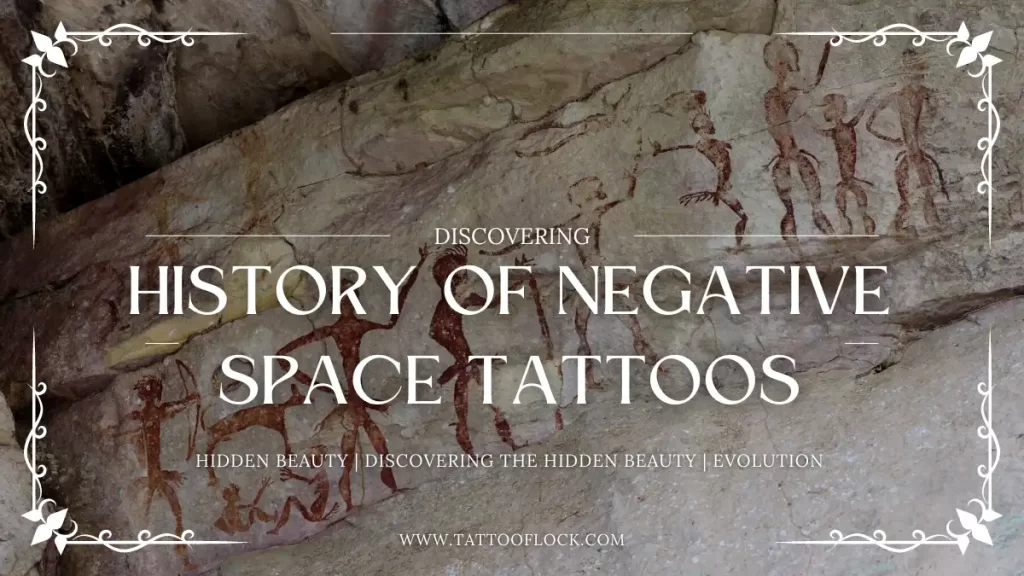
In the world of tattoos, negative space designs have been making a bold and unique statement in recent years. These breathtaking art pieces utilize the space between lines and shapes to create a mesmerizing effect that draws the eye in. But did you know the history of negative space tattoos?
These type of tattoos have a rich history that dates back centuries. From traditional tribal ink to modern blackwork designs, the evolution of space tattoos is a fascinating story that every tattoo enthusiast should know.
In this blog post, we’ll delve into the meaning behind these tattoos, explore their origins, and examine their evolution into the dark art tattoos of today. Whether you’re intrigued by the negative space tattoo meaning, curious about the blackout tattoo sleeve meaning, or just fascinated by the history of dark art tattoos, keep reading to discover the hidden beauty of negative space tattoos.
Table of Contents
Early Forms or History of Negative Space Tattoos
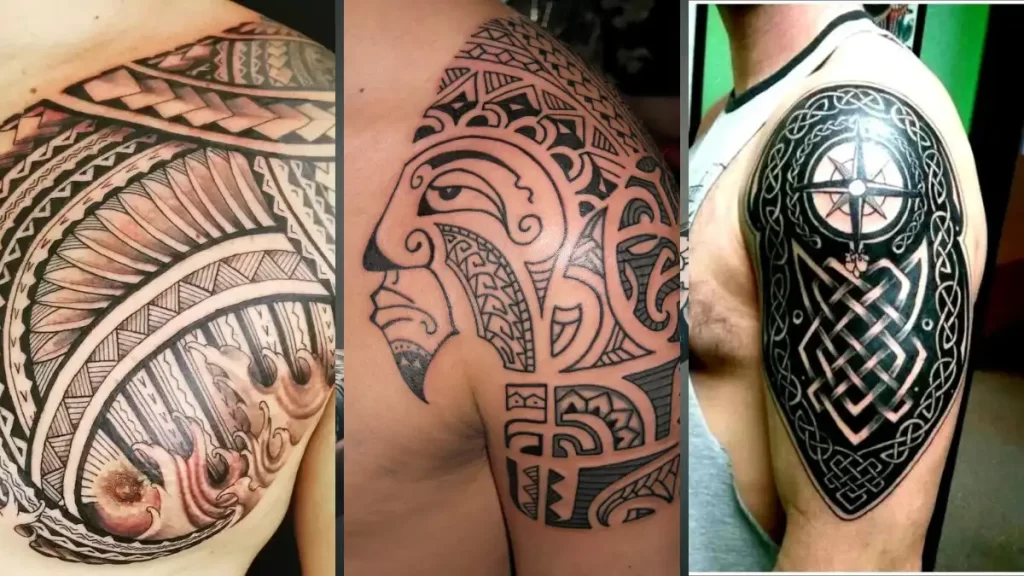
The history of negative space tattoos dates back centuries, and early forms of this mesmerizing art can be found in traditional tribal tattoos, Polynesian tattoos, and Celtic tattoos. These tattoos were often intricate and meaningful, creating bold and striking designs using negative space.
Traditional Tribal Tattoos
Traditional tribal tattoos were some of the earliest forms of space less tattoos. These tattoos were often used to signify a person’s identity within a tribe, with the designs and placement of the tattoo indicating their rank or status. Negative space was used in these tattoos to create contrast and depth, making the designs more eye-catching.
Polynesian Tattoos
Polynesian tattoos, on the other hand, were often more abstract and used negative space to create intricate patterns and designs. These tattoos were also highly symbolic, with each pattern and shape holding a specific meaning. Negative space often balances light and dark, creating a visually striking and meaningful design.
Celtic Tattoos
With their intricate knots and spirals, Celtic tattoos also used negative space to create depth and contrast. These designs often had complex meanings related to the natural world, with symbols representing the sun, moon, and elements. Negative space was used to create intricate patterns and shapes that were both beautiful and meaningful.
Negative Space in Modern Tattooing
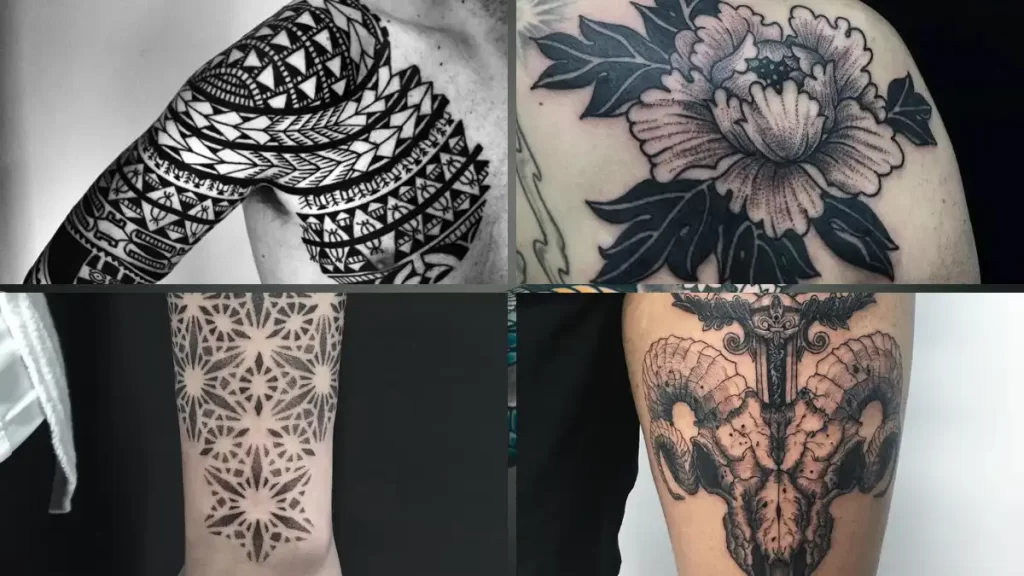
As the world of tattooing has evolved, so too has the use of negative space. Modern tattoo artists create stunning and unique art pieces using negative space in new and innovative ways. Some of the most popular negative space tattoo styles include blackwork, geometric, dotwork, and illustrative tattoos.
Blackwork Tattoos
Blackwork tattoos use large areas of negative space to create bold and striking designs. These tattoos often feature intricate patterns and shapes, using negative space to create contrast and depth. Blackwork tattoos have become increasingly popular in recent years, with many people opting for full-sleeve or back designs.
Geometric Tattoos
Geometric tattoos, on the other hand, use negative space to create intricate and symmetrical designs. These tattoos often feature precise lines and shapes, creating a mesmerizing and hypnotic effect. Geometric tattoos can be both minimalist and complex, depending on the design and use of negative space.
Dotwork Tattoos
Dotwork tattoos use small dots of ink to create stunning and intricate designs. Negative space is used to create contrast and depth, with the dots creating a unique texture that is both bold and subtle. Dotwork tattoos can be incredibly detailed, with some designs taking hundreds of hours to complete.
Illustrative Tattoos
Illustrative tattoos use negative space to create bold and striking designs that are reminiscent of classic art styles. These tattoos often feature intricate line work and shading, creating a stunning and unique piece of beautiful and meaningful art.
The Symbolism of Space Less Tattoos
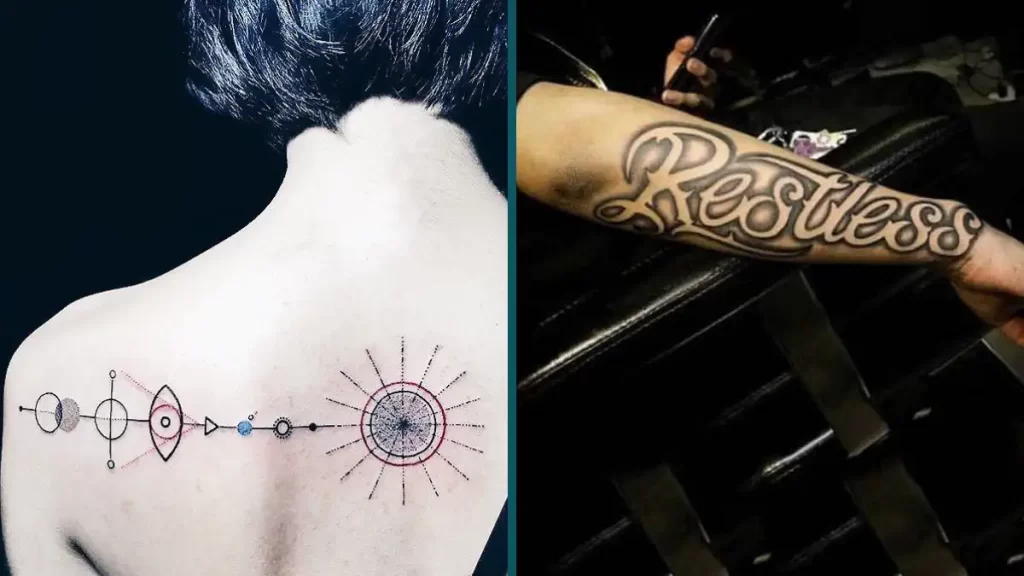
These tattoos are not just visually stunning; they also carry significant symbolism and meaning. These tattoos use the absence of ink to create striking designs and convey powerful messages.
The use of negative space in art and design is a technique that dates back centuries. In tattooing, negative space is often used to create contrast and depth, making the design stand out.
The use of negative space in tattoo symbolism varies widely and depends on the specific design and cultural background.
Examples
- A blackout tattoo sleeve represents overcoming personal struggles or moving past a difficult time in life.
- Similarly, a negative space heart tattoo symbolizes a broken heart or the loss of a loved one.
- Another example of negative space tattoo symbolism is the lotus flower. The darker areas represent the mud and muck the lotus must grow through before blooming. The lotus flower is a symbol of growth, resilience, and enlightenment.
- Other famous examples of these tattoos include mandalas, yin, and yang symbols, and animals such as wolves and lions. Each of these designs uses negative space to create a visually stunning and meaningful piece of art.
The Future of Negative Space Tattoos
Negative space tattoos have come a long way since their inception and continue to evolve with advancements in tattoo technology. Today, artists can use laser removal techniques to create space less tattoos, where the ink is removed to create the design. This has opened up new possibilities for artists to create intricate designs and patterns, making these tattoos even more popular.
The Trend
The trend for these tattoos has been growing steadily over the years, and it shows no signs of slowing down. With the rise of social media, it’s easier than ever for people to discover new and exciting tattoo designs. As a result, many people are seeking out talented artists to create unique and meaningful pieces of art.
The Impact
The impact of space less tattoos on the tattoo industry is significant. As the trend continues to grow, more artists are incorporating negative space into their designs, creating stunning and unique pieces of art. This has led to a surge in demand for skilled tattoo artists who specialize in negative space type tattoos, and the industry is responding to this by providing more training opportunities.
The Future
The future of space less tattoos is bright, with endless possibilities for artists and clients alike. As the trend continues to gain popularity, we can expect to see even more creative and innovative designs emerge. With advancements in technology and the increasing demand for skilled artists, negative space type tattoos are sure to continue making their mark on the tattoo industry for years to come.
Conclusion
In conclusion, the history of negative space tattoos is fascinating, with roots dating back to traditional tribal tattoos and evolving into modern forms such as blackwork, geometric, and dotwork tattoos. As we’ve seen, spaceless tattoos are not just about the design but also the meaning and symbolism behind them.
The significance of negative space in art and design is evident in the intricate and meaningful designs that artists create today. Negative space tattoos offer a unique and innovative way to express oneself through body art.
As we look to the future, it’s clear that negative space-type tattoos will continue to evolve and grow in popularity. The impact of this trend on the tattoo industry is significant, with more artists and clients seeking new and creative ways to incorporate negative space into their designs.
Personally, I find negative space tattoos to be incredibly beautiful and meaningful. The use of negative space to create stunning designs and meaningful symbolism is truly inspiring.
In conclusion, I invite you to explore the world of negative space tattoos further. Whether you’re a tattoo enthusiast or simply appreciate art and design, there’s something truly special about these unique and innovative tattoos. With a rich history and a bright future ahead, negative space tattoos are sure to continue making an impact in the world of body art.

